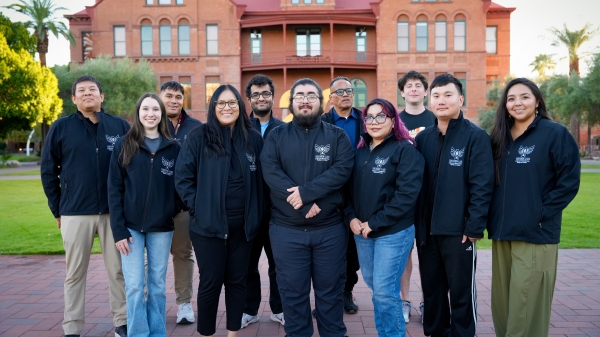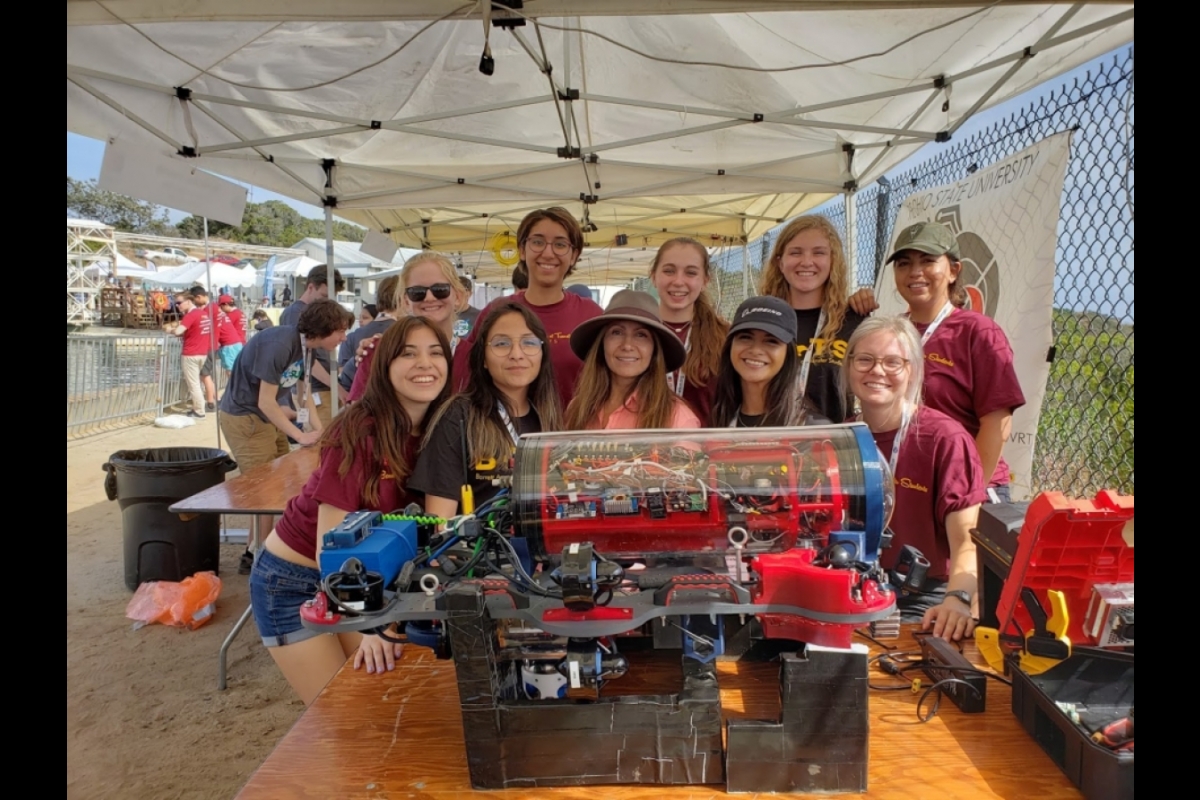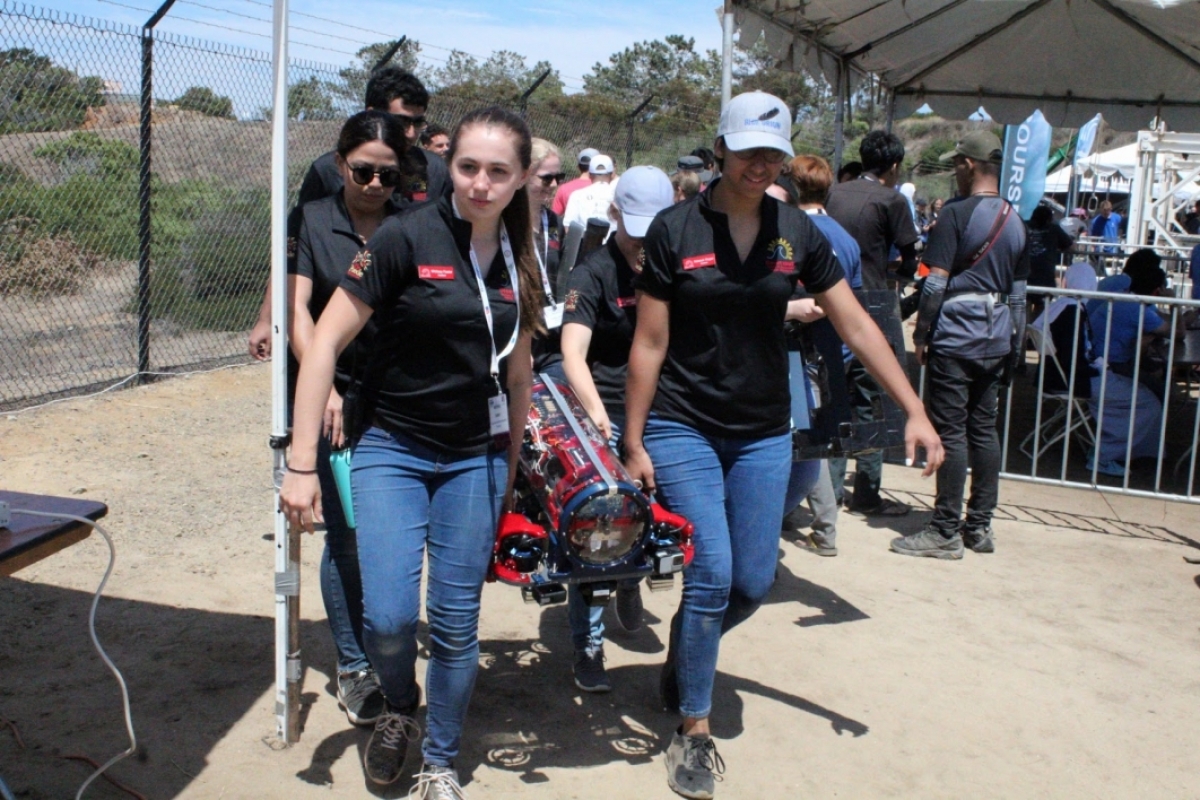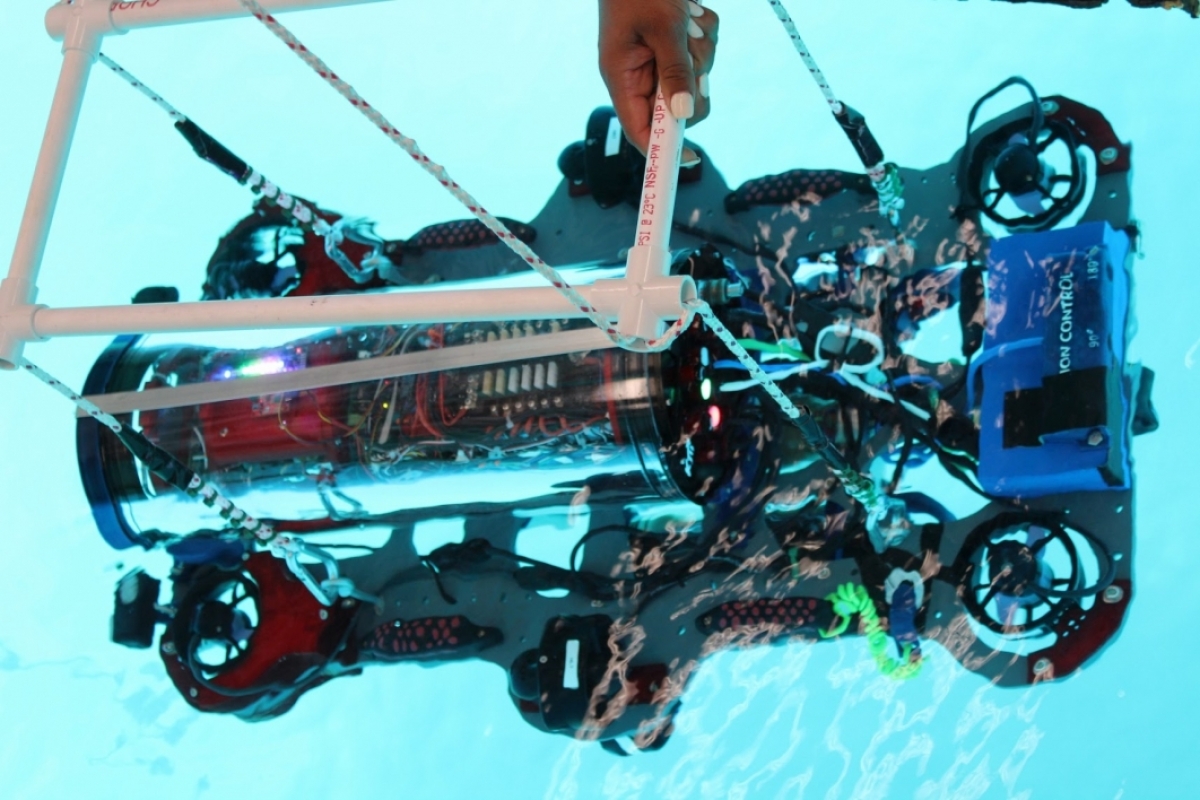ASU students make waves in international robotics competition

The all-female Desert WAVE team's robotic submarine won third place at the robotic submarine during the 2019 International RoboSub Competition in San Diego. Photo courtesy of Desert WAVE
Desert WAVE, the all-female underwater robotics team of Arizona State University students in the Ira A. Fulton Schools of Engineering, made a splash in San Diego this past weekend. The Women in Autonomous Vehicle Engineering team won third place in the 2019 International RoboSub Competition — a major feat for the first-time competitors.
Hosted by the Office of Naval Research and RoboNation, the competition tasked 55 teams from more than 12 countries with designing and building an autonomous underwater vehicle. Desert WAVE prepared for the event by meeting weekly for several months with their mentors, engineering lecturer Daniel Frank and Faridodin Lajvardi of the Si Se Puede Foundation. Together they turned the tide in their favor by building relevant industry-related skills in computer-aided design, 3D printing and teamwork.
After placing fifth in the semi-finals, Desert WAVE swelled to third place in a competitive final round after Harbin Engineering University from China and Far Eastern Federal University/Institute for Marine Technology Problems from Russia. Their standing made Desert WAVE the highest-ranked from the United States and earned them a $3,000 prize. Other U.S. competitors included teams from the California Institute of Technology, Carnegie Mellon, Georgia Tech, the University of California Berkeley, the Ohio State University, the University of Maryland, the University of Florida and Texas A&M University.
Desert WAVE was created by a partnership between The Polytechnic School, one the six Fulton Schools and Si Se Puede Foundation, a nonprofit organization dedicated to providing resources for underserved communities. Desert WAVE is also sponsored by Blue Robotics and MakerBot.
The partnership provides young women engineers with the opportunity to work together on engineering projects. Their efforts carried them to the top of the competition worldwide.
Excited about ending the competition with high marks, the team members – many of whom are freshmen – are already looking forward to competing in the RoboSub competition next year.
More Science and technology

Indigenous geneticists build unprecedented research community at ASU
When Krystal Tsosie (Diné) was an undergraduate at Arizona State University, there were no Indigenous faculty she could look to…

Pioneering professor of cultural evolution pens essays for leading academic journals
When Robert Boyd wrote his 1985 book “Culture and the Evolutionary Process,” cultural evolution was not considered a true…

Lucy's lasting legacy: Donald Johanson reflects on the discovery of a lifetime
Fifty years ago, in the dusty hills of Hadar, Ethiopia, a young paleoanthropologist, Donald Johanson, discovered what would…


